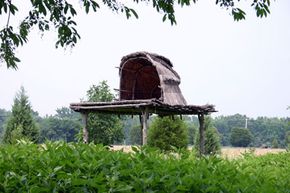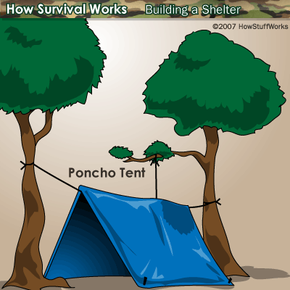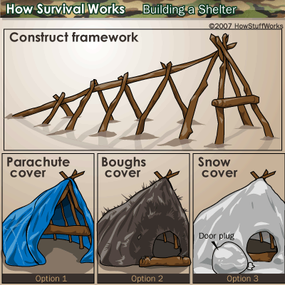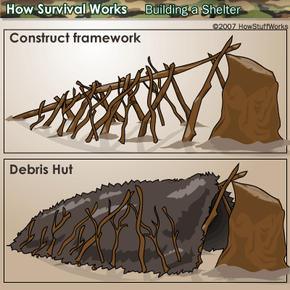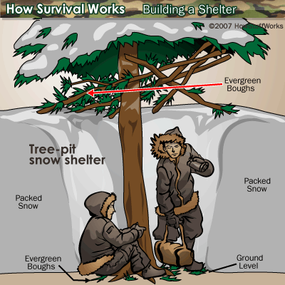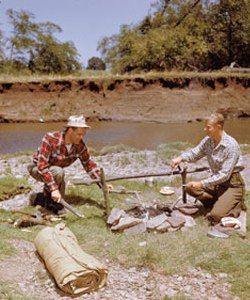Here's a worst-case scenario for you: You've been separated from your day hiking group late on a chilly fall afternoon and find yourself alone in the woods. You have no tent or sleeping bag, and night falls fast deep in the forest. You call out and hear nothing but the cold wind. You mark a tree and walk half a mile and back in every direction -- no one, nothing. A cold shiver washes over you, and you realize that if you don't get some shelter from the coming night's cold, you may be in serious trouble. What happens in the next couple of hours may decide whether or not you survive the night.
You may not think you'd ever need to learn survival techniques. Just because you don't fashion yourself as John Rambo doesn't mean you might not be faced with a situation like the one above. It could be a swerve from a steep and quiet stretch of road. Maybe you find yourself injured and unable to go for help. Knowledge of some of the basic survival techniques will give you a fighting chance.
Advertisement
U.S. military field manual 21-76-1 calls survival a "decision." This means that if you take the proper steps in a survival situation, you stand a good chance at living to talk about it. There are many important moves you make in your bid to survive in the wilderness. The first and maybe most important one is to set yourself up with adequate shelter.
A good shelter is important on several fronts. Not only does it shield you from the elements, it can also hide you from wildlife intruders and provide the psychological comfort needed to remain calm and in control. Depending on the survival situation you find yourself in, there are several different ways to seek shelter. In this article, we'll look at some of these scenarios and go over the different ways to build the best shelter for your needs.
In the next section, we'll look at some wilderness shelter basics.
Advertisement
